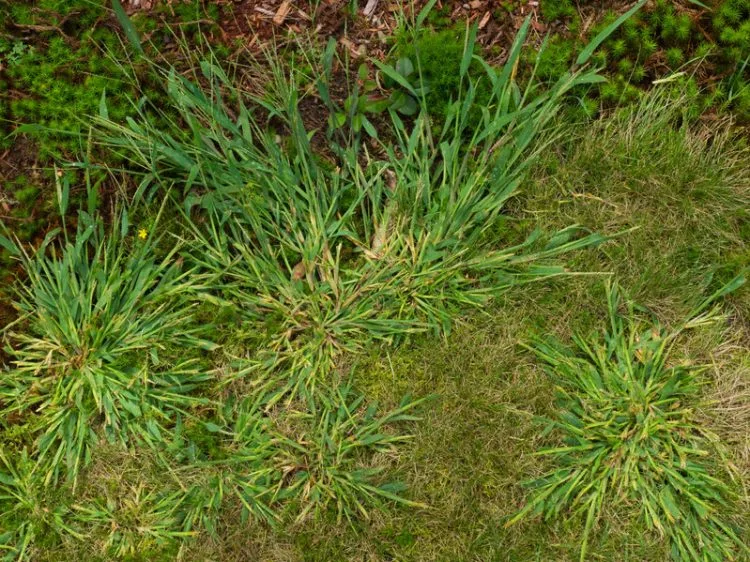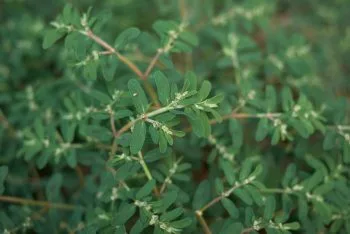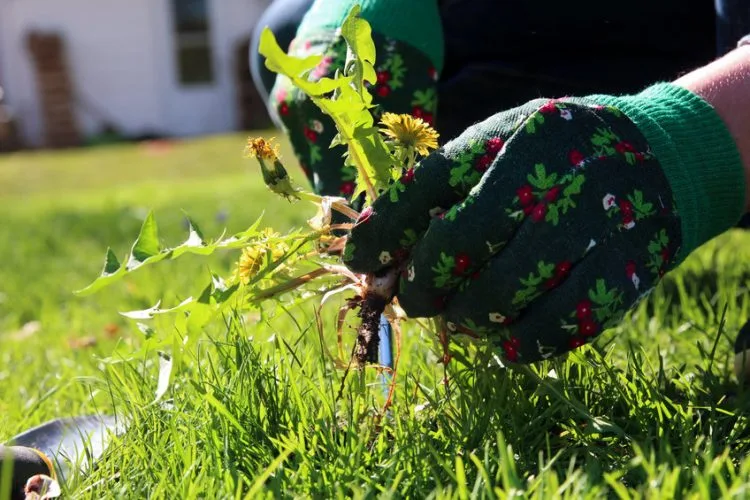The most effective weed management strategy is to have a dense lawn that is healthy. Weeds will discover any vulnerability in your lawn and use that as an opportunity to invade.
Proper lawn care requires more than just mowing. Soil PH levels need to be checked and maintained. Soil compaction or excessive thatch needs to be dealt with. Your lawn needs to be watered well and mowed to the appropriate height.
Evergreen Lawn and Landscape is happy to help you with your lawn’s maintenance needs. When you fail to maintain your lawn, weeds will begin to establish themselves and spread throughout your turfgrass.
Most people know they should be applying weed control products to their lawn. But many don’t know when exactly to apply the products. Furthermore, many people aren’t sure the types of products they should be using.
This article is going to give you all the information you need to know about herbicides and when to apply them.
Information about herbicides
There are two types of weed killers, selective and non-selective. Selective weed killers will kill only the specific weed targeted. Non-selective weed killers will kill any plant that it comes in contact with. This includes the turfgrass that you want to maintain.
The next subcategory of herbicides is pre-emergent and post-emergent. Pre-emergent herbicides are preventative. They target weeds that have not yet sprouted. Post-emergent herbicides kill weeds that are actively growing.
Pre-emergent herbicides are treating weeds you cannot see yet. Post-emergent herbicides are treating weeds that you can see.
Pre-emergent and post-emergent herbicides come in either a liquid or granular form. If you choose to use a granular herbicide, water your lawn immediately after so the product can soak in and not blow away. If you choose to use a liquid product, do not water your lawn afterwards or the product will wash off. Check the forecast beforehand as well and apply accordingly.
In order to know when you should be applying a specific weed killer product, you must first identify which types of weeds you are trying to manage. Are the weeds grassy or broadleaf? Are they warm-season or cool-season weeds? Texas A&M has a very helpful weed identification guide that will help you pinpoint which weeds are growing or might start growing in your yard.
RELATED TIP: Best TIme for Pre-Emergent for Weed Control
When you know which weeds you have or will have, you can easily choose the right treatment and apply it at the correct time.
Spring

Early spring is a great time to apply pre-emergent herbicides to your lawn. Applying a pre-emergent product will prevent summer weeds from germinating. You will apply the first dose and then 3 months or 90 days later, you will need to apply a second dose.
Another reason spring is an effective time of year to use herbicides is because it is a rainy time of year. The soil needs to be moist to activate the herbicides.
When the soil is wet, the roots are able to absorb the weed killer. If the soil is not wet, the sun will evaporate the weed killer before it can do its job.
Pre-emergent weed control products need to be applied when soil temperatures are between 50- 55 degrees Fahrenheit. This is another reason people start applying them in spring because the temperatures are warming up enough for the product to be effective.
Here in the Dallas/Fort Worth metroplex, crabgrass and grassburs are the most common weeds people are using pre-emergents for. Crabgrass spreads very quickly. It will grow faster than most turfgrasses. Crabgrass must be treated with a pre-emergent herbicide.
Once the temperatures start rising, other weeds will start popping in spring. These may include dandelions, spurge, chickweed, and henbit. These will need to be treated with post-emergent products. Once you see them on your lawn, put down the weed killer.
Summer

During the summer as soon as you see weeds, apply a post-emergent herbicide. You don’t want to let the weeds grow and mature. The more weeds you have, the more money you will spend on products.
Many weeds thrive in hot and dry conditions, which means you will have your work cut out for you in the long, summer months.
RELATED TIP: List of the Bad Summer Bugs for Lawn and Gardens
Spurge is a broadleaf weed that will sprout in spring and grow all summer. Nutsedge is a perennial weed that will pop up in summer. It loves warm temperatures and goes dormant in cool months.
Pre-emergents are not typically used throughout the summer unless it is applied in late August.
Fall
Fall is a time of year when both pre and post- emergent products will be used. Pre-emergents are used to stop winter weeds from sprouting. Here’s an article titled, “When to Apply Pre-Emergent for Winter Weeds,” that gives more in-depth information. Post-emergent products are used to stop any actively growing weeds.
Common winter weeds are chickweed, henbit, and bluegrass. Once henbit starts spreading it can be very difficult to manage. Your best bet is to hire a professional like Evergreen Lawn and Landscape to get rid of this weed.
Spread a pre-emergent in fall to stop the spread of bluegrass. Post-emergent weed killer can be used later, if more weeds start showing up.
Rescuegrass is an annual winter weed that thrives in cold weather. It is a very grassy weed which makes it hard to detect. Try to beat it by first applying a pre-emergent herbicide and follow up with a post-emergent herbicide if needed.
Winter
People do not usually apply weed control products in winter unless they live in an area with very mild temperatures. Weed killers do not work when daytime temperatures drop below 40 degrees Fahrenheit degrees.
Final Thoughts
As a general rule of thumb, in North Texas, pre-emergent herbicides should be applied twice a year. Once sometime in February-March and then a second time during August-November.
Post emergent herbicides should be applied 1-2 times a year during April-September. Make sure soil temperatures are above 55 degrees Fahrenheit.
Weeds have a tough time invading healthy turf. So your best defense against weeds is to maintain a lush, dense lawn.
Weeds are unsightly and hard to get rid of. Call Evergreen Lawn and Landscape today so we can help set you up with the best weed control products for your lawn.



Comments (0)
Thanks for your comment!
Thanks for your feedback! Your comments have been successfully submitted! Please note, all comments require admin approval prior to display.
Error submitting comment!
There is a problem with your comment, please see below and try again.